Abstract
The carbon monoxide consumption rates of the carboxydobacteria Pseudomonas (Seliberia) carboxydohydrogena, P. carboxydovorans, and P. carboxydoflava were measured at high (50%) and low (0.5 μl liter−1) mixing ratios of CO in air. CO was only consumed when the bacteria had been grown under CO-autotrophic conditions. As an exception, P. carboxydoflava consumed CO also after heterotrophic growth on pyruvate. At low cell densities the CO consumption rates measured at low CO mixing ratios were similar in cell suspensions and in mixtures of bacteria in soil. CO consumption observed in natural soil (loess, eolian sand, chernozem) as well as in suspensions or soil mixtures of carboxydobacteria showed Michaelis-Menten kinetics. The Km values for CO of the carboxydobacteria (Km = 465 to 1,110 μl of CO liter−1) were much higher than those of the natural soils (Km = 5 to 8 μl of CO liter−1). Considering the difference of the Km values and the observed Vmax values, carboxydobacteria cannot contribute significantly to the consumption of atmospheric CO.
Full text
PDF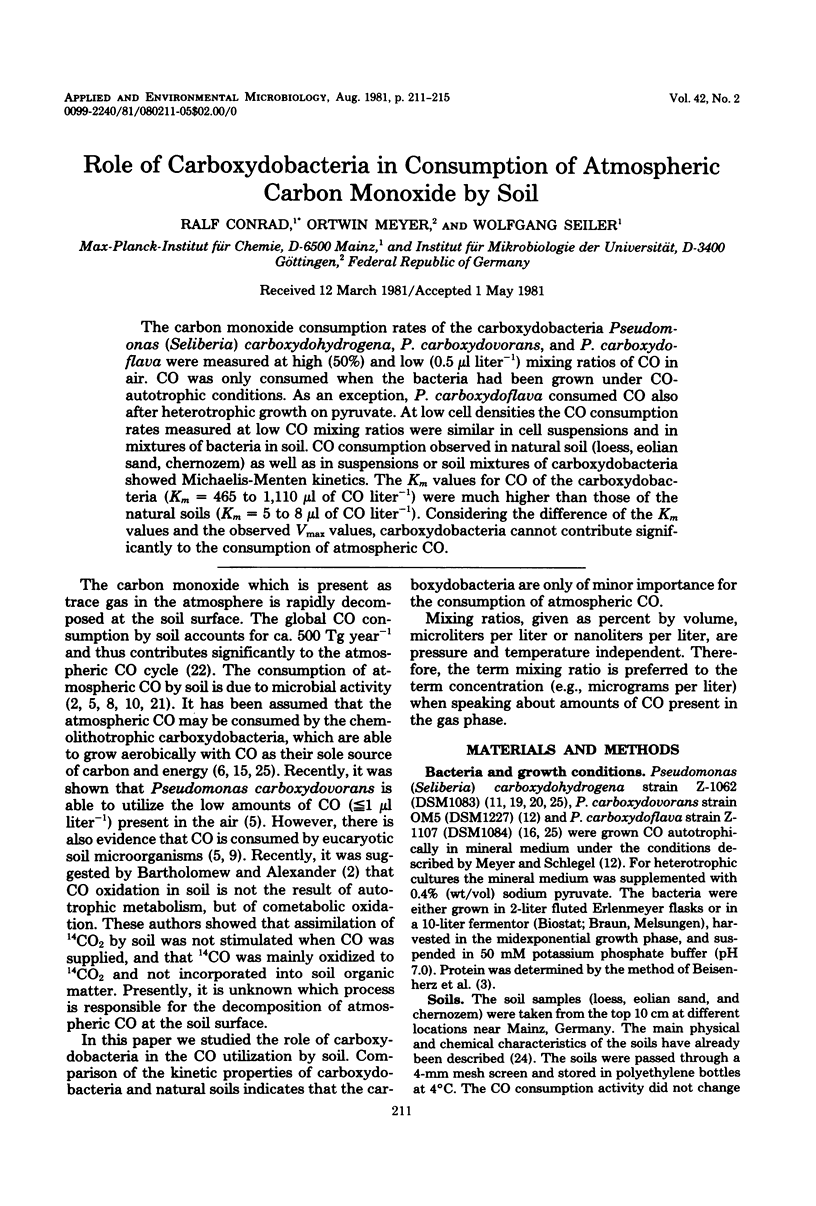
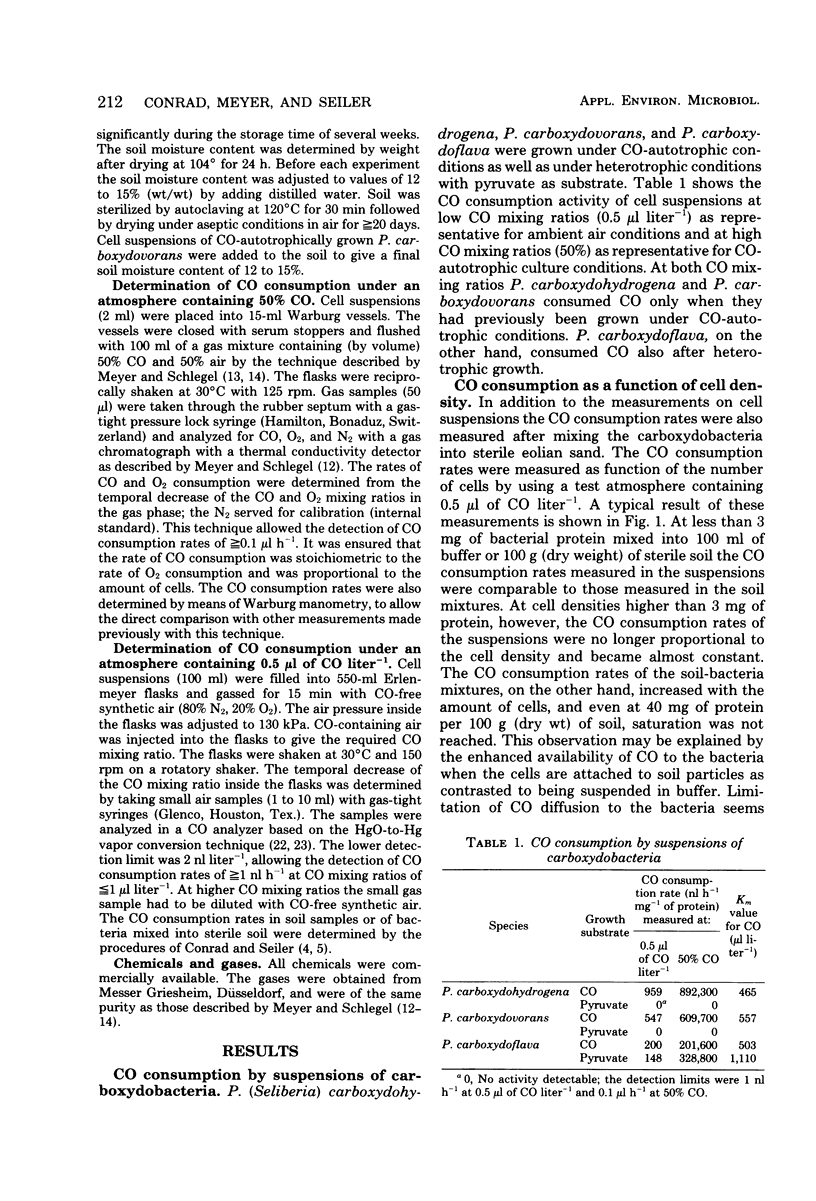
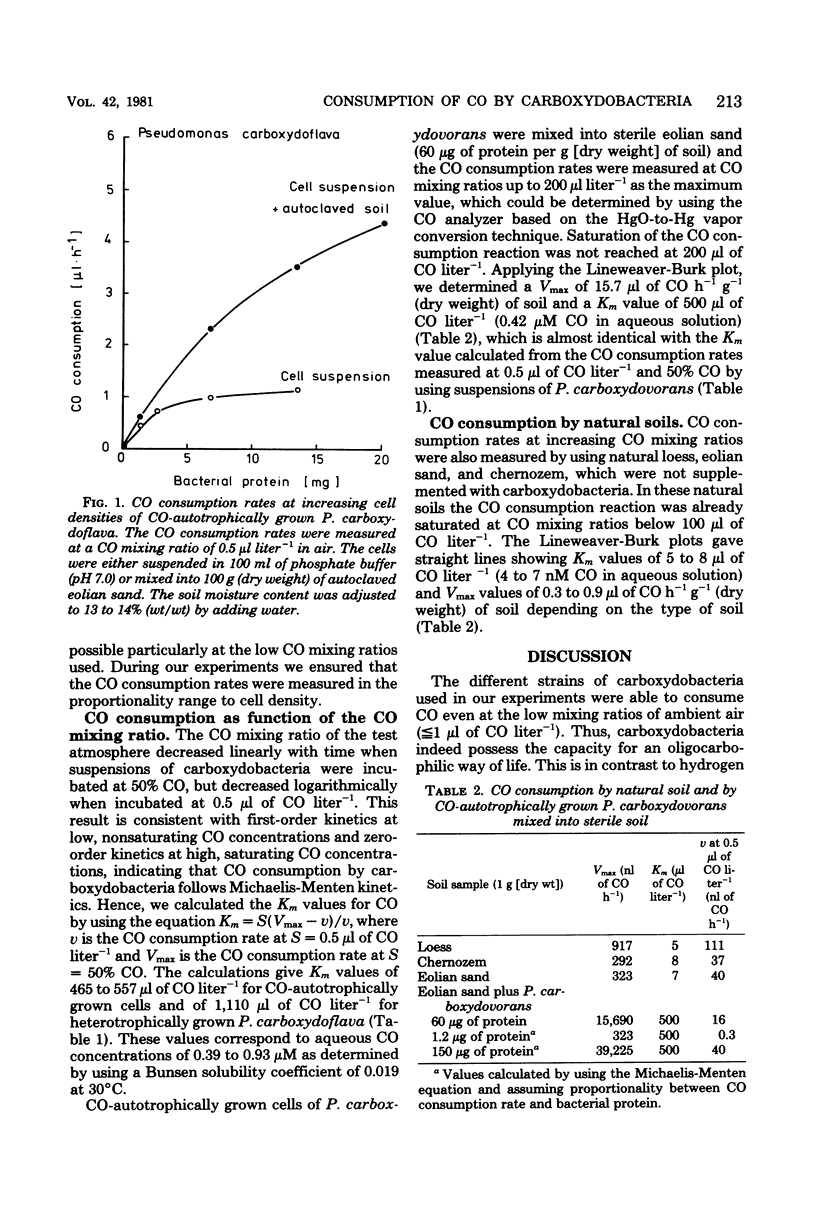
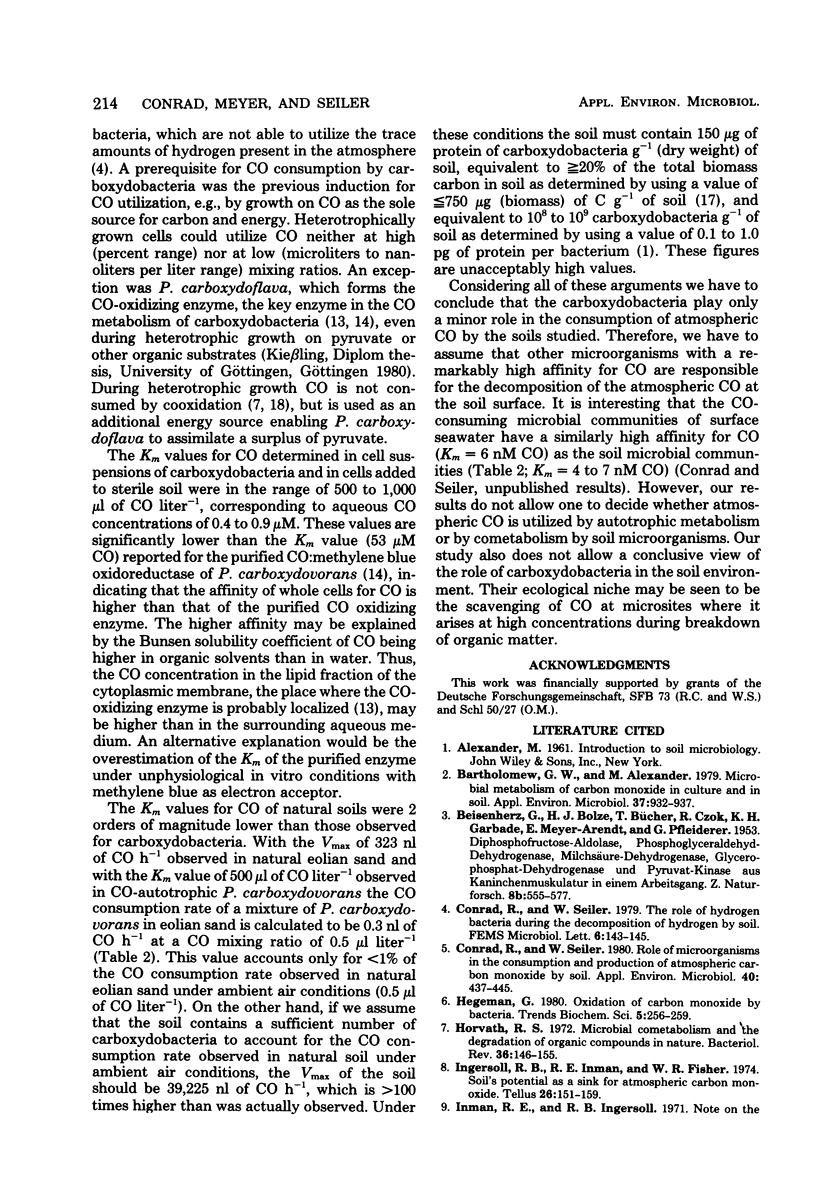
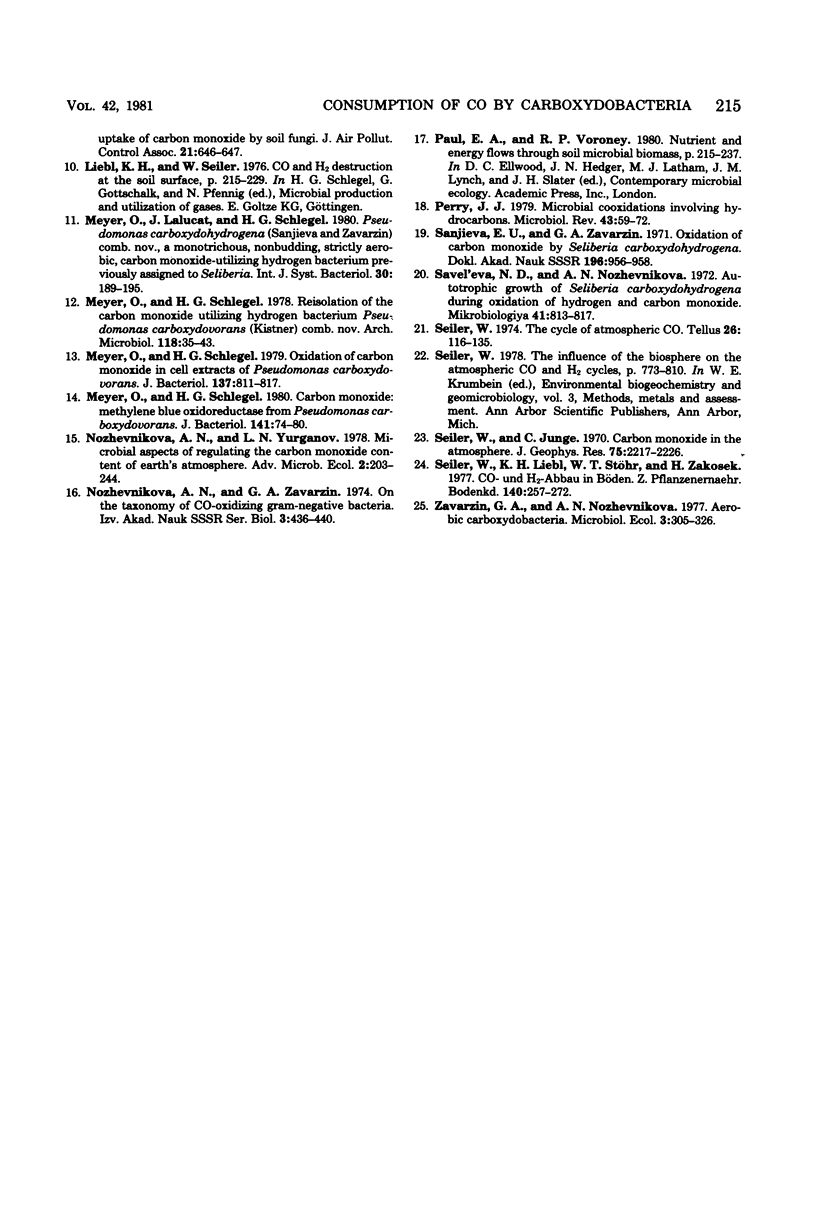
Selected References
These references are in PubMed. This may not be the complete list of references from this article.
- Bartholomew G. W., Alexander M. Microbial metabolism of carbon monoxide in culture and in soil. Appl Environ Microbiol. 1979 May;37(5):932–937. doi: 10.1128/aem.37.5.932-937.1979. [DOI] [PMC free article] [PubMed] [Google Scholar]
- Conrad R., Seiler W. Role of microorganisms in the consumption and production of atmospheric carbon monoxide by soil. Appl Environ Microbiol. 1980 Sep;40(3):437–445. doi: 10.1128/aem.40.3.437-445.1980. [DOI] [PMC free article] [PubMed] [Google Scholar]
- Horvath R. S. Microbial co-metabolism and the degradation of organic compounds in nature. Bacteriol Rev. 1972 Jun;36(2):146–155. doi: 10.1128/br.36.2.146-155.1972. [DOI] [PMC free article] [PubMed] [Google Scholar]
- Meyer O., Schlegel H. G. Carbon monoxide:methylene blue oxidoreductase from Pseudomonas carboxydovorans. J Bacteriol. 1980 Jan;141(1):74–80. doi: 10.1128/jb.141.1.74-80.1980. [DOI] [PMC free article] [PubMed] [Google Scholar]
- Meyer O., Schlegel H. G. Oxidation of carbon monoxide in cell extracts of Pseudomonas carboxydovorans. J Bacteriol. 1979 Feb;137(2):811–817. doi: 10.1128/jb.137.2.811-817.1979. [DOI] [PMC free article] [PubMed] [Google Scholar]
- Meyer O., Schlegel H. G. Reisolation of the carbon monoxide utilizing hydrogen bacterium Pseudomonas carboxydovorans (Kistner) comb. nov. Arch Microbiol. 1978 Jul;118(1):35–43. doi: 10.1007/BF00406071. [DOI] [PubMed] [Google Scholar]
- Nozhevnikova A. N., Zavarzin G. A. K taksonomii CO-okisliaiushchikh gramotritsatel'nykh bakterii. Izv Akad Nauk SSSR Biol. 1974 May-Jun;(3):436–440. [PubMed] [Google Scholar]
- Perry J. J. Microbial cooxidations involving hydrocarbons. Microbiol Rev. 1979 Mar;43(1):59–72. doi: 10.1128/mr.43.1.59-72.1979. [DOI] [PMC free article] [PubMed] [Google Scholar]
- Sanzhieva E. U., Zavarzin G. A. Bakteriia, okisliaiushchaia okis' ugleroda. Dokl Akad Nauk SSSR. 1971 Feb 1;196(4):956–958. [PubMed] [Google Scholar]
- Savel'eva N. D., Nozhevnikova A. N. Avtotrofnyi rost Seliberia carboxydohydrogena pri okislenii vodoroda i okisi ugleroda. Mikrobiologiia. 1972 Sep-Oct;41(5):813–817. [PubMed] [Google Scholar]


